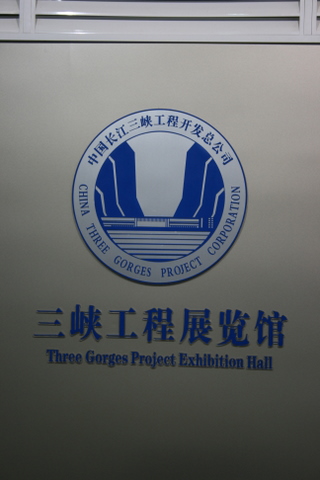The main dam-related stops on our trip were Yichong and Wuhan. I had an abysmal internet connection in Yichong and we didn’t actually stay at a hotel in Wuhan, so I’m days behind schedule here. Commence: Lightning Round.
Yichong: The dam itself was too foggy to see well, but we’ve seen about eight scale models of it at various places, so we knew what to look for. Even shrouded in fog, it’s an intimidating pile of concrete and engineering. We also went to the Three Gorges Project museum, which was near our hotel and just downstream from the dam itself. Out of the small-scale models, its was the most detailed. Still, China – would it kill you to build a scale model with running water? A current on the Yangtze – that’s all we’re asking for. The next morning, our local tour guide, Max, agreed to take us to a resettlement area. Nearly 1.5 million farmers and villagers were resettled as part of the Three Gorges Project, and we wanted to get a better sense of what their resettled lives are like. What kind of housing was built for them? What’s the industry and infrastructure like in the resettlement towns? Instead, our tour guide took us on a four hour nature walk with the Chinese version of a renaissance faire in the middle of it. It was a beautiful area and the views of the Yangtze were stunning, but it was about as authentic as Epcot Village.
Wuhan: Further downstream, we met with the directors of the Yangtze River Scientific Research Institute, which is the organization responsible for the hydrological plan for the Three Gorges Dam. After a summary of some of their current research on silt and runoff levels, they took us to the smaller of their two physical models. As someone with a healthy appreciationg for scale models, it was just incredible. It’s based on a topographic map of the area around the dam, and they can manipulate hundreds of variables to recreate conditions down to very small detail. One of the researchers from the Institute told us that this model is used primarily for prediction, and that they generally use 100 years of past hydrological data to model conditions 100 years into the future.









Could you go back as a regular tourist and see the facilities built for the displaced population?
One of the short comings of a communist regime is avoiding any sign of failure to any aspects of society managed by government. Beautiful countryside, water is always photogenic and attractive in a landscape.
By: eldon marsh on December 18, 2009
at 12:19 am
Just trying to reach Nico about the snow storm coming to DC. Not sure whether his flight will be canceled out of Chicago, but will try to book something else for him.
By: Nico's Mom on December 18, 2009
at 10:26 pm
Do small amounts of water (like in a scale model) behave the same as large amounts of water?
By: Helen on December 28, 2009
at 5:59 pm